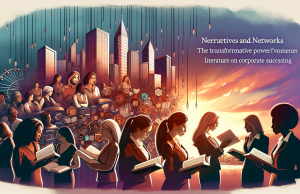Cultivating a Growth Mindset with a Scout: Unlock Your Full Potential
In today’s rapidly evolving professional landscape, success is no longer just about what you know—it’s about your willingness and ability to learn, adapt, and grow. This is where the growth mindset comes in: the belief that your abilities and intelligence can be developed through effort, learning, and persistence. A growth mindset helps you embrace challenges, view setbacks as opportunities, and continuously strive for improvement. But cultivating and maintaining this mindset isn’t always easy, especially in the face of obstacles. That’s where the guidance of a scout can make all the difference.
Here’s how working with a scout can help you develop a growth mindset, empowering you to reach new heights in your personal and professional journey:
1. Reframing Challenges as Opportunities
A key element of a growth mindset is viewing challenges as opportunities to learn rather than obstacles to avoid. A scout helps you shift your perspective, guiding you to see difficult tasks or situations as chances to grow and improve. With a scout’s support, you’ll begin to embrace challenges rather than shy away from them, ultimately fostering resilience and adaptability.
Example: If you’re struggling with a demanding project, your scout might help you break it down into manageable parts, focusing on how each challenge can teach you something new and valuable rather than being overwhelmed by the difficulty.
2. Learning from Failure
Failure is an inevitable part of any growth journey, but with a growth mindset, failures become learning experiences rather than roadblocks. A scout helps you reflect on setbacks and mistakes, guiding you through the process of understanding what went wrong, how to improve, and how to apply those lessons moving forward. This approach not only builds resilience but also turns failures into stepping stones for future success.
Example: If a job application or presentation didn’t go as planned, your scout might guide you in reviewing what could have been done differently, helping you extract valuable insights to apply to future opportunities.
3. Embracing Continuous Learning
A growth mindset thrives on the desire for continuous learning and self-improvement. A scout encourages you to seek out new skills, knowledge, and experiences that expand your horizons and push you outside your comfort zone. Whether it’s taking courses, attending workshops, or simply being curious about new areas, a scout helps you build a mindset where learning becomes a lifelong pursuit.
Example: If you’re considering learning a new technical skill, your scout might help you identify relevant courses or mentors, pushing you to develop new competencies that align with your career goals.
4. Setting Stretch Goals
While it’s important to set achievable goals, a growth mindset also thrives on stretch goals—ambitious targets that push you beyond your current capabilities. A scout works with you to set these stretch goals, guiding you to challenge yourself and step out of your comfort zone. By setting higher standards for yourself, you develop the persistence and drive to continuously improve.
Example: If you’re currently in a junior management position, your scout might encourage you to set a goal of leading a larger, cross-functional team within the next year, helping you develop the skills necessary to achieve this ambitious target.
5. Building Resilience in the Face of Setbacks
One of the greatest benefits of a growth mindset is resilience—the ability to bounce back from setbacks and continue striving toward your goals. A scout helps you build this resilience by guiding you through difficult situations and offering strategies for maintaining motivation when things don’t go as planned. They help you stay focused on the bigger picture and remind you that setbacks are temporary, not permanent.
Example: If you didn’t get a promotion you were hoping for, your scout might help you reflect on the experience, understand what areas need improvement, and guide you toward actionable steps to better position yourself for future opportunities.
6. Cultivating Curiosity and Open-Mindedness
A growth mindset is fueled by curiosity and the willingness to explore new ideas, perspectives, and approaches. A scout encourages you to be open-minded in your learning, challenging you to explore areas you might not have considered before. This curiosity not only keeps you engaged but also opens doors to unexpected opportunities for growth and innovation.
Example: If you’ve always worked in one specific industry, your scout might encourage you to attend events or read up on trends in adjacent fields, helping you broaden your understanding and see new possibilities for collaboration or career pivots.
7. Fostering a Positive Attitude Toward Feedback
Constructive feedback is essential for growth, but receiving it can sometimes feel uncomfortable. A scout helps you develop a positive attitude toward feedback, guiding you to see it as a valuable tool for improvement rather than criticism. They’ll coach you on how to seek out feedback proactively and apply it to enhance your performance and skills.
Example: If your manager provides feedback about areas of improvement, your scout might guide you in viewing this as an opportunity to sharpen your skills rather than feeling discouraged. They’ll help you create an action plan to address the feedback constructively.
8. Encouraging Effort and Persistence
A growth mindset emphasizes the importance of effort and persistence in achieving success. A scout motivates you to keep going, even when progress feels slow or obstacles seem insurmountable. They help you stay focused on long-term growth, reminding you that consistent effort, no matter how small, leads to meaningful improvement over time.
Example: If you’re feeling stuck in your career development, your scout might guide you in breaking your larger goals into smaller, achievable tasks, ensuring you stay motivated and persistent as you make incremental progress.
9. Adopting a Solution-Oriented Approach
People with a growth mindset focus on solutions rather than dwelling on problems. A scout helps you adopt this solution-oriented approach by guiding you to think creatively and resourcefully in the face of challenges. They teach you to ask, “How can I fix this?” rather than “Why did this happen to me?”
Example: If a project hits an unexpected roadblock, your scout might guide you in brainstorming alternative solutions or reaching out to team members for support, ensuring that you maintain a forward-thinking, problem-solving mindset.
10. Reflecting on Progress and Celebrating Growth
Part of maintaining a growth mindset is taking time to reflect on your progress and celebrate how far you’ve come. A scout helps you pause and recognize the growth you’ve achieved, no matter how incremental. This reflection not only boosts motivation but also reinforces the mindset that growth is a continuous, rewarding process.
Example: At the end of a challenging project, your scout might guide you in reflecting on the new skills you’ve developed, the obstacles you overcame, and how these experiences have contributed to your personal and professional growth.
Conclusion
A growth mindset is a powerful asset that can unlock your full potential and lead to ongoing personal and professional development. By working with a scout, you can cultivate this mindset, transforming challenges into opportunities, setbacks into lessons, and effort into success. From reframing failures to fostering continuous learning and building resilience, a scout helps you embrace the belief that growth is always possible—with the right attitude and approach.
With a growth mindset and a scout by your side, you’ll not only enhance your skills and career prospects but also develop the confidence and motivation to keep pushing your boundaries and unlocking new opportunities for success.































